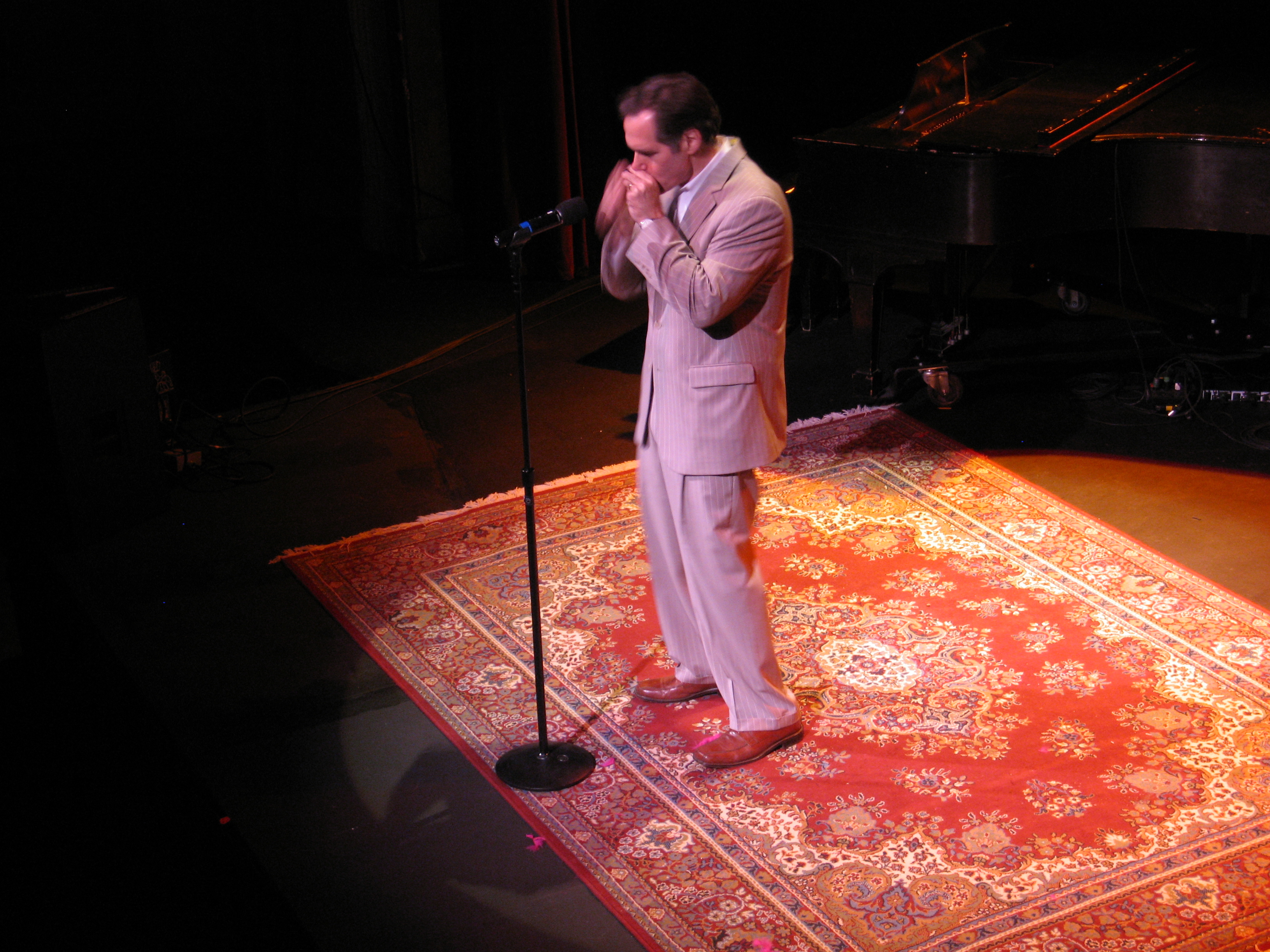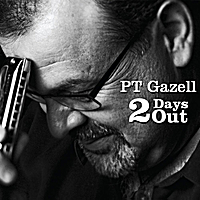
Record Review: PT Gazell, “2 Days Out”
“2 Days Out” is PT Gazell’s latest jazz record, and it’s a lot of fun to listen to. The music is traditional but subversive; the dozen pieces on the CD are mostly mid-tempo jazz standards, and the treatments would be familiar to any small ensemble from the swing era, but no swing era band ever put a diatonic harmonica up front and paired it with brass. From the sound of this record somebody should have considered it before now.
Did I mention that this record is a lot of fun? It all begins with a sprightly duet between upright bass and harmonica on “There is no greater love,” which melody I have been whistling to myself ever since I heard this recording. Gazell’s playing throughout the CD’s 12 cuts is deft and confident; I used to think PT was almost too polite sometimes, but he’s plenty assertive now. (A turning point seems to have been PT’s recent duet CD with Brendan Power, whose rampant energy is sure to bring out the fire-breather in any collaborator.) The band knows their business, and the various pairings of lead instruments–harp and flugelhorn, harp and trombone–sound fresh and lively. I don’t know who’s doing PT’s arrangements on this record, but whoever it is has come up with some inspired sounds. Trombone and harp–who’d’a thunk?
The record also raises some very interesting issues where playing the diatonic harp chromatically is concerned. To be specific, Gazell’s playing here is a lot smoother in terms of pitch and timbre than most of the stuff I hear done with bending and overblowing. The reason can only be that Gazell’s preferred technique for playing chromatically, which involves the use of valves on certain reed slots in the low to mid register, is inherently more stable than bends and overblows on unvalved diatonics. It’s rare on this record that I hear an altered pitch that makes me wince. The music just flows and does what it’s supposed to do: keep your toe tapping and your face smiling. The easy confidence of the playing makes it just as easy to forget that you’re listening to a technique with some pretty profound implications for the diatonic harp. This is another one of the ways in which this record is quietly radical. Certainly no one has taken this approach farther than Gazell, and the results are very musical.
The music is above all relaxed and swinging. Much modern jazz and classical (read: “serious”) music demands complete attention on repeated listenings to get the listener to the point where it all makes sense–where the listener can relax into the music, so to speak. The style Gazell is working here is familiar enough for most listeners to decode it instantly. It’s suitable for background when you’re going about your other business, and deep enough to reward careful listening with gems of nuance, emotion, and virtuosity.
Swing isn’t a new style, and I’ve heard a lot of it. I didn’t expect a swing record to be so captivating, but I find myself playing this record frequently, and smiling every time I do. If that sounds appealing to you, get this record.
Related Posts
2 Comments
Leave a Reply
You must be logged in to post a comment.
WHAT’S NEW
Categories
- Audio/Video
- Blog
- Blue Future
- Digitech RP Tricks and Tips
- Discography, CDs, Projects, Info, Notes
- Featured Video
- For the Beginner
- Gallery
- Hunter's Effects
- Hunter's Music
- Huntersounds for Fender Mustang
- Meet the Pros
- More Video
- MPH: Maw/Preston/Hunter
- My Three Big Contributions
- Player's Resources
- Pro Tips & Techniques
- Recommended Artists & Recordings
- Recommended Gear
- Recorded Performances
- Reviews, Interviews, Testimonials
- The Lucky One
- Uncategorized
- Upcoming Performances
- Zoom G3 Tips and Tricks

Wonderful review of a wonderful album! PT is always so damn musical, tasteful, and in the pocket, and this group provides the perfect backdrop for his wizardry.
The only thing I found a bit puzzling in your review, Richard (and apologies in advance for being so nit-picky, but I’m curious about it) was the comment “…swing–it’s not a novelty, and in 2011 it’s hardly the cutting edge of music…”. And of course you went on to say that you enjoyed the album anyway. I don’t disagree with that statement at all, but I don’t get the point since it would seem to apply to most musical styles. I think that if you want to get to cutting edge, you need to be more than just competent at playing the styles you wish to draw from, or you risk blazing a trail that rests on a rocky foundation. I really think that any jazz player worth their salt will have to go through a swing phase as part of their musical education — at least that’s where I’m at — it’s a difficult style to master but the journey is full of rewards.
Anyway, PT is one cool swingin’ cat and clearly loves this genre.
– Slim.
PT has an absolutely phenomenal swing timing.